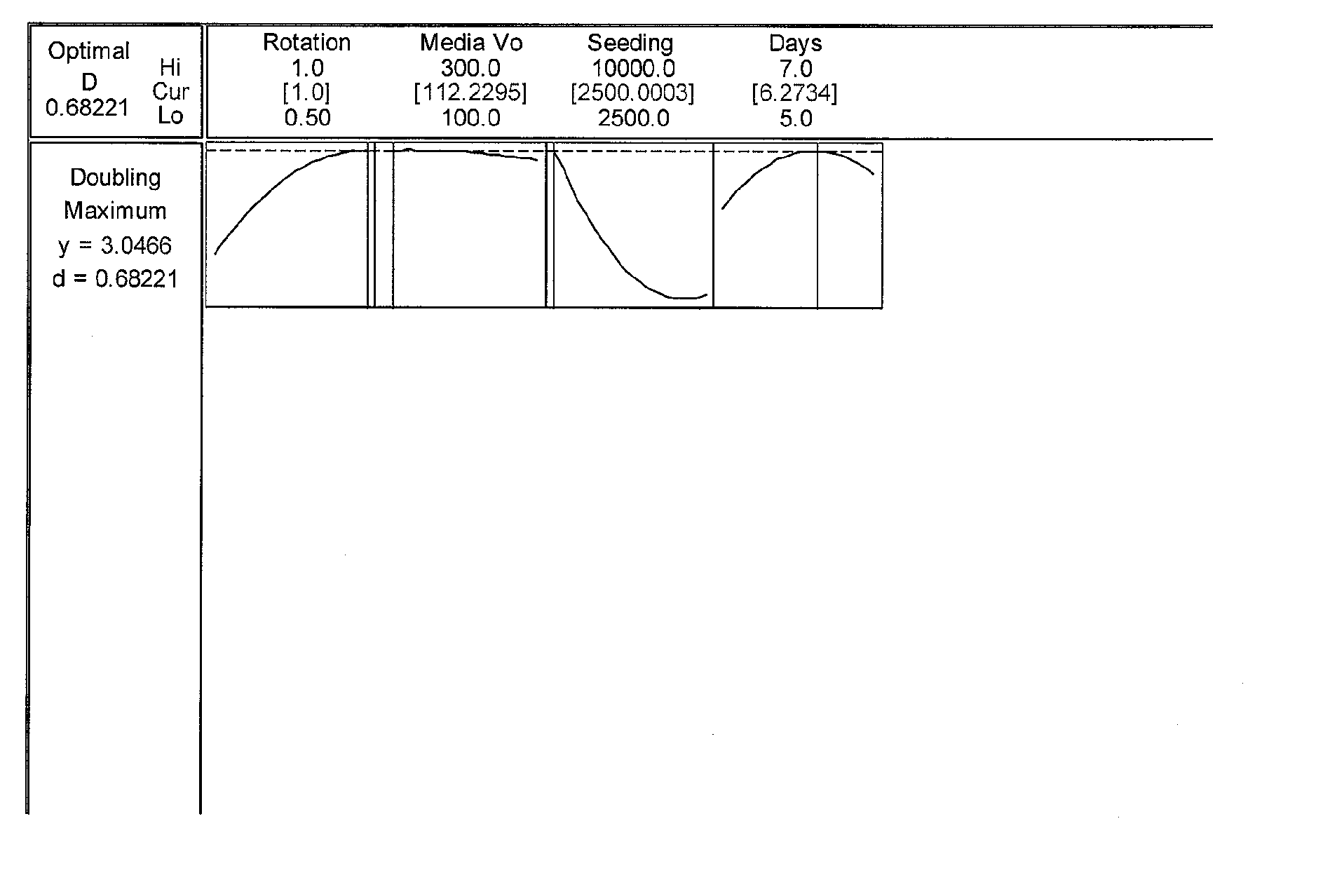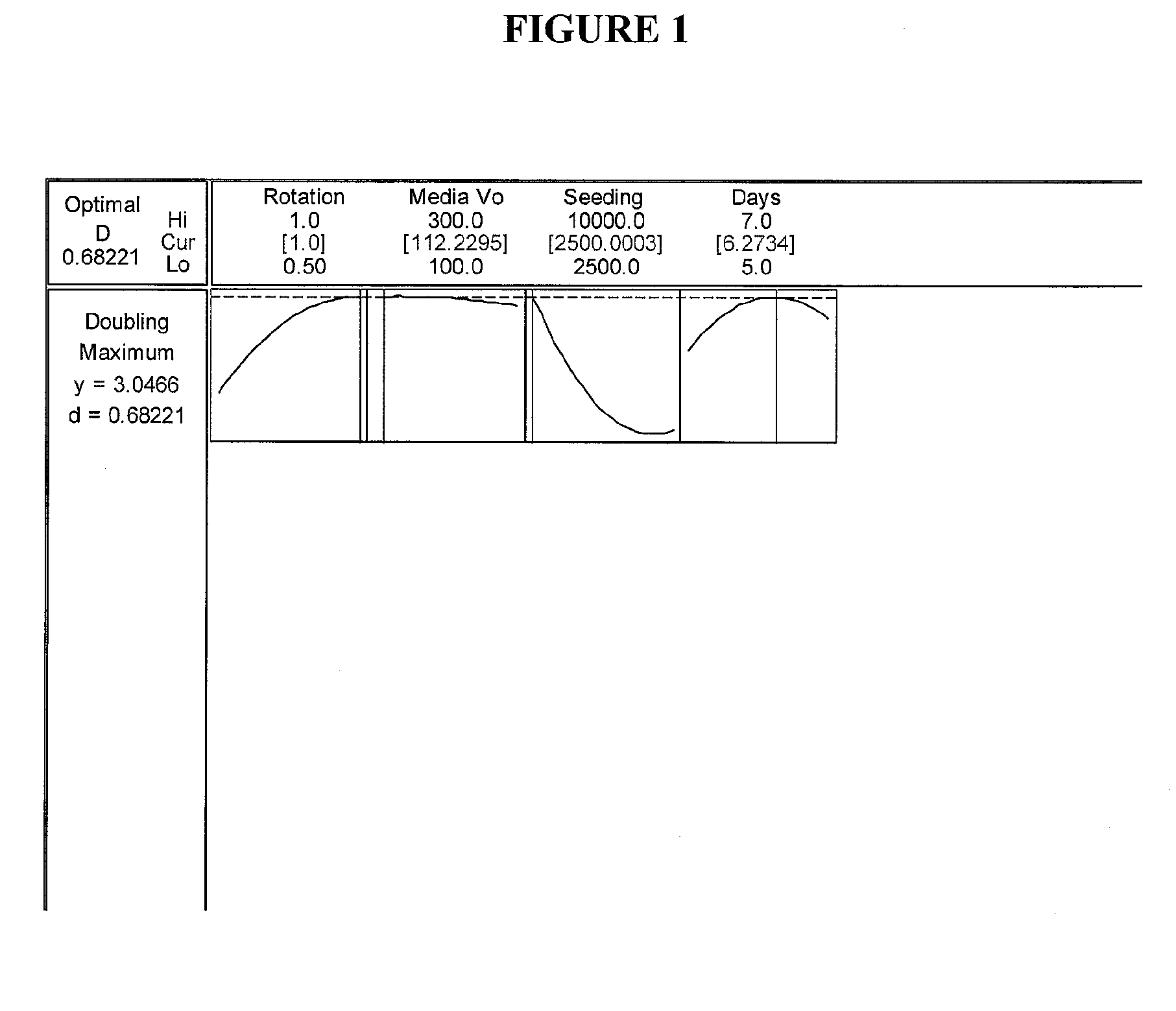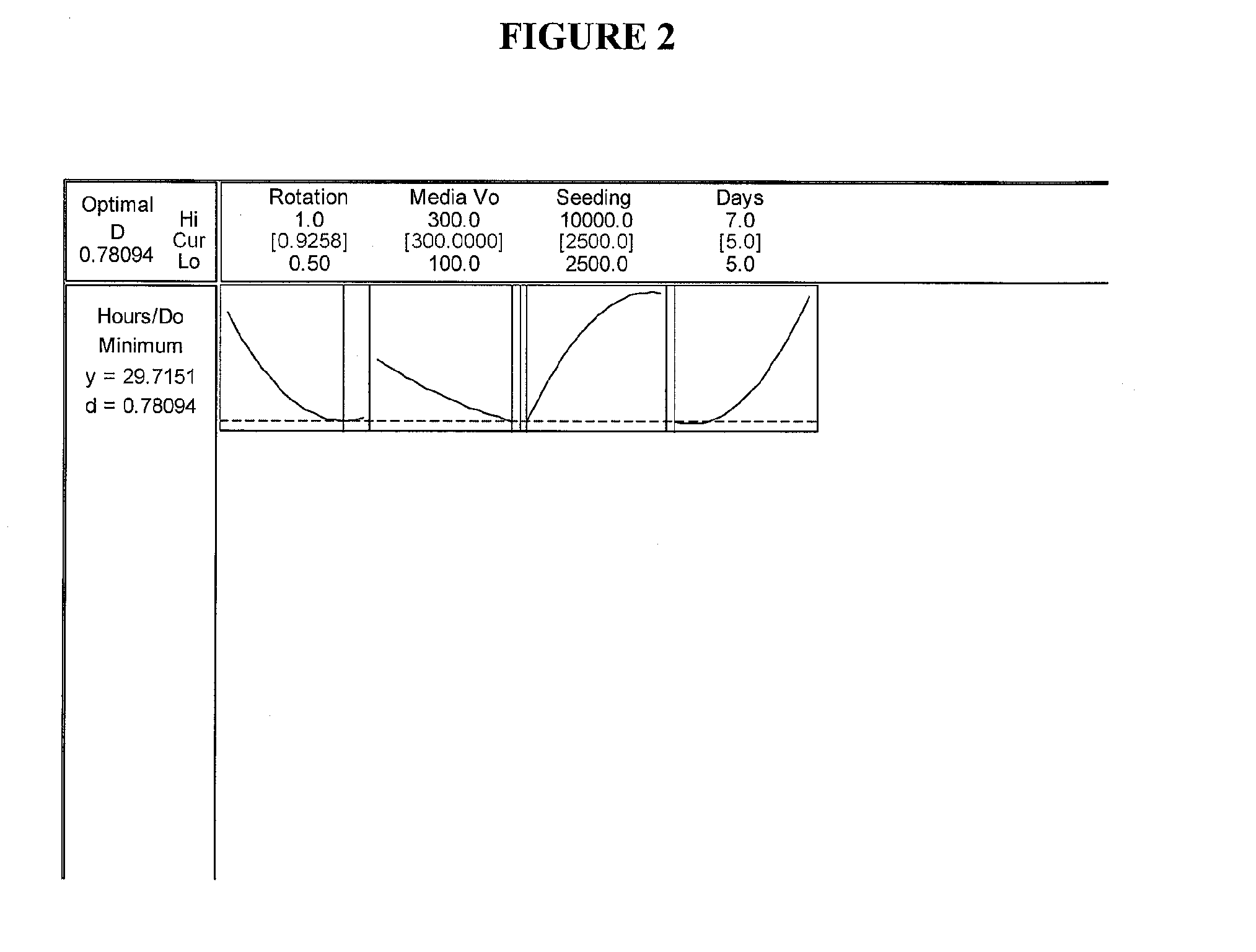In vitro expansion of postpartum-derived cells in roller bottles
a postpartum-derived cell and roller bottle technology, applied in the field of mammalian cell growth and expansion, can solve the problems of large size limitation, many cell lines used in commercial cell therapy products, and many cell lines that are anchorage dependen
- Summary
- Abstract
- Description
- Claims
- Application Information
AI Technical Summary
Benefits of technology
Problems solved by technology
Method used
Image
Examples
example 1
Optimization Experiments for Determining Culture Condition Parameters
[0058] Cells: The cells used were from umbilicus-derived cell line ATCC Accession Nos. PTA-6067 and / or PTA-6068.
[0059] Media: The growth medium used during the optimization experiments was Dulbecco's Modified Eagle Medium (DMEM) with low glucose, 15% Fetal Bovine Serum, 1% Penicillin-Streptomycin, and 1 ppm 2-Mercaptoethanol.
[0060] Bottles: 850 cm sq bottles were used (e.g. Corning catalog number 430851)
[0061] Gelatin Coating: Twenty (20) ml of 2% gelatin solution were added to each 850 cm sq bottle. The bottles were placed on the roller system for 20 minutes at 1 rpm. The excess gelatin solution was removed by aspiration and the bottles washed with 20 ml Phosphate Buffered Saline (PBS).
[0062] Cell Seeding: P13 Umbilical 022803 cells from frozen stock cells were thawed from a cryogenic vial and washed to remove dimethyl sulfoxide (DMSO). Cells were seeded into single 850 cm sq roller bottle pre-filled with 300...
example 2
Validation of Optimized Culture Conditions
[0072] Cells: The cells used were umbilicus-derived cells identified as CBAT 050604B P6 (passage 6).
[0073] Media: Dulbecco's Modified Eagle Medium (DMEM) -low glucose, 15% Fetal Bovine Serum, Penicillin-Streptomycin, 2-Mercaptoethanol was used for the validation experiments.
[0074] Bottles: The bottles used were 850 cm sq culture bottles (e.g. Corning catalog number 430851).
[0075] Gelatin Coating: Twenty milliliters of 2% gelatin solution were added to each 850 cm sq bottle. The bottles were placed on the roller system for 20 minutes. The gelatin solution was removed by aspiration and each bottle was washed with 20 ml PBS.
[0076] Cell Seeding: 5.0E+06 P9 umbilical-derived cells (#050604B) were thawed from a single cryogenic vial and washed to remove DMSO. Cells (2.12E+06) were seeded into a single 850 cm sq roller bottle pre-filled with 300 ml media and pre-gassed for 1 minute with compressed air containing 5% CO2, 95% atmospheric gas.
[0...
example 3
Characterization of Cells Expanded on Optimized Culture Conditions
[0081] Cells: Cells used for characterization experiments were umbilicus-derived cells at passage 6 (050604B P6)
[0082] Growth Medium: Dulbecco's Modified Eagle Medium (DMEM)-low glucose, 15% Fetal Bovine Serum, Penicillin-Streptomycin, 2-Mercaptoethanol was used as the growth medium.
[0083] Bottles: 850 cm sq bottles (e.g. Corning catalog number 430851)
[0084] Gelatin Coating: Twenty (20) ml of 2% gelatin solution was added to each 850 cm sq bottle. The bottles were placed on the roller system for 20 minutes. The gelatin solution was removed by aspiration and each bottle was washed with 20 ml PBS.
[0085] Cell Seeding: Umbilicus-derived cells at passage 9 (5.0E+06 P9) were thawed from a single cryogenic vial and washed to remove DMSO. Cells (2.12E+06) were seeded into 850 cm sq roller bottles pre-filled with 300 ml media and pre-gassed for 1 minute with compressed air containing 5% CO2, 95% atmospheric gas.
[0086] In...
PUM
| Property | Measurement | Unit |
|---|---|---|
| volume | aaaaa | aaaaa |
| volume | aaaaa | aaaaa |
| incubation time | aaaaa | aaaaa |
Abstract
Description
Claims
Application Information
 Login to View More
Login to View More - R&D
- Intellectual Property
- Life Sciences
- Materials
- Tech Scout
- Unparalleled Data Quality
- Higher Quality Content
- 60% Fewer Hallucinations
Browse by: Latest US Patents, China's latest patents, Technical Efficacy Thesaurus, Application Domain, Technology Topic, Popular Technical Reports.
© 2025 PatSnap. All rights reserved.Legal|Privacy policy|Modern Slavery Act Transparency Statement|Sitemap|About US| Contact US: help@patsnap.com



